7 Best Games to Play for Family Fun Nights
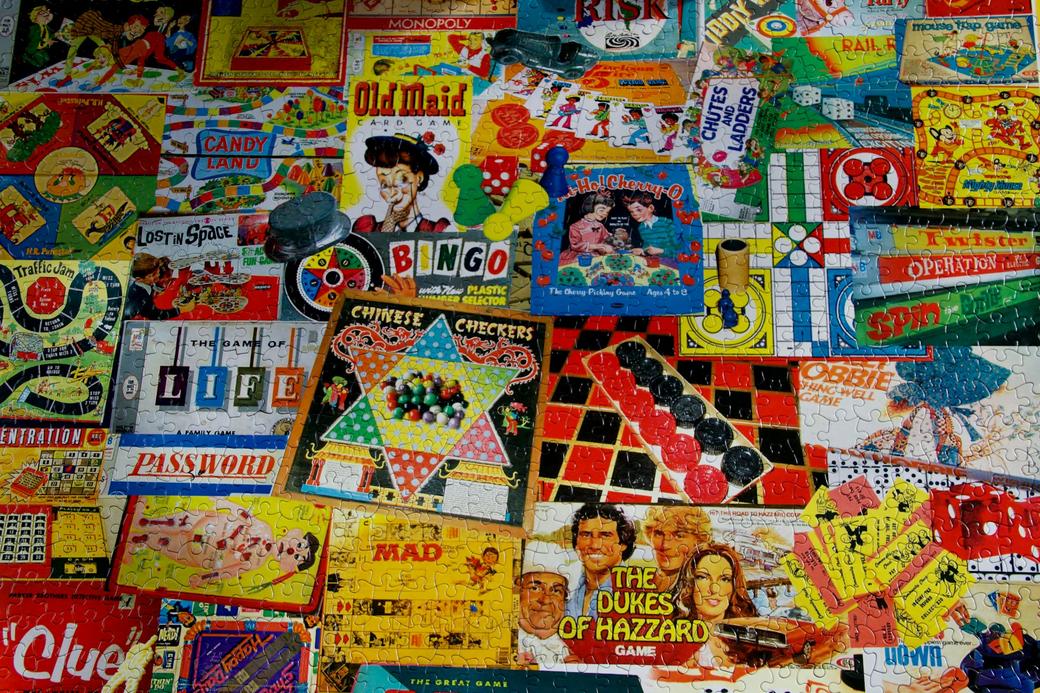
Wondering how to keep everyone entertained and bring your family closer through laughter, bonding, and pure enjoyment?
Here are 7 fun family game night ideas to help you create lasting memories without breaking the bank. Game night is a cherished tradition for many families, offering a simple, enjoyable way to bond and have a good time together. Whether you're starting a new tradition or looking for fresh ideas for your regular game night, these games—from classic board games to exciting card games—promise fun for everyone involved.
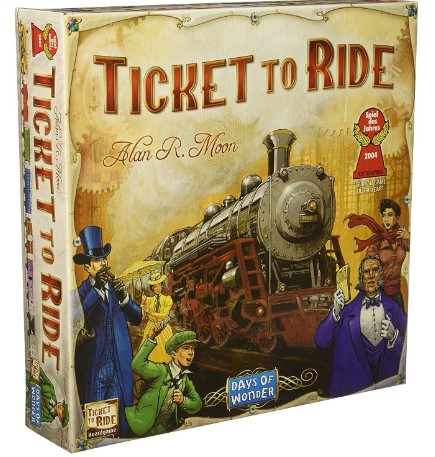
Ticket to Ride
Ticket to Ride is a fantastic board game that appeals to train lovers and strategy game fans alike. It's simple to learn, making it ideal for family game nights, yet offers enough depth to keep players of all ages engaged. Here’s a detailed guide to help you dive into the world of Ticket to Ride:
Setup:
Game Board and Components:
Lay out the game board, depicting a map of the region specific to your version (North America, Europe, New York, San Francisco, etc.).
Each player selects a set of colored train pieces and places the corresponding scoring marker on the starting point of the score track.
Shuffle the train cards and deal four to each player.
Shuffle the destination ticket cards and deal three to each player. Players must keep at least two but can keep all three if they choose.
Place the remaining train cards in a draw pile and flip five cards face up next to it.
Keep the destination ticket cards in a separate draw pile.
Gameplay:
Objective:
The goal is to score the most points by completing destination tickets, claiming routes, and having the longest continuous path of trains on the board.
Turn Structure:
On your turn, you can choose one of three actions:
Draw Train Cards: Take two train cards from the face-up cards or draw from the top of the draw pile. If you draw a face-up locomotive (wild card), you can only take one card.
Claim a Route: Use train cards from your hand that match the color and number of spaces on the board to claim a route. Place your trains on the route and score points based on its length.
Draw Destination Tickets: Draw three destination tickets from the deck. Keep at least one and return the rest to the bottom of the pile.
Scoring:
Points are awarded for each route claimed during the game:
1 train = 1 point
2 trains = 2 points
3 trains = 4 points
4 trains = 7 points
5 trains = 10 points
6 trains = 15 points
Additional points are scored for completed destination tickets and the longest continuous path of trains at the end of the game.
End of Game:
The game ends when a player has two or fewer trains left after their turn. Each player, including that player, gets one final turn.
Players then reveal their destination tickets and adjust their scores based on completed or incomplete tickets.
The player with the longest continuous path of trains receives a bonus.
Why Ticket to Ride is Great for Family Fun:
Easy to Learn: Simple rules make it accessible for younger players while still challenging for adults.
Strategic Depth: Balancing the completion of tickets, claiming routes, and blocking opponents adds layers of strategy.
Variety: Multiple versions and expansions keep the game fresh and exciting.
Educational: Enhances geographical knowledge and strategic thinking.
Ticket to Ride is a timeless board game that brings families together for hours of fun. Whether you're traveling across North America, Europe, or cityscapes like New York or San Francisco, the thrill of building train routes and completing destination tickets makes for a memorable game night.
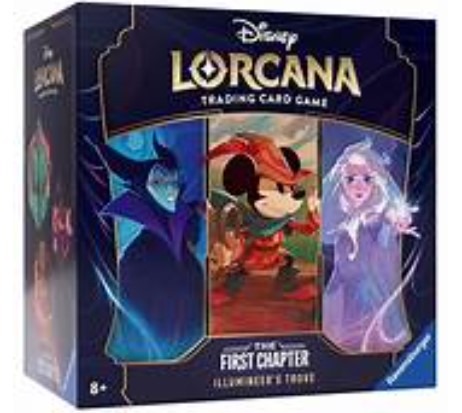
Disney Lorcana
Disney Lorcana combines the enchantment of Disney with the strategic depth of card games like Magic: The Gathering. Perfect for Disney fans and card game enthusiasts alike, Lorcana invites players to step into a whimsical world where they can bring beloved Disney characters to life. Here's how to get started and what makes this game a magical experience for all ages.
Setup:
Game Components:
Each player starts with a deck of cards featuring various Disney characters, spells, and items.
Set up the play area with enough space for each player to lay out their cards.
Each player draws a hand of seven cards from their shuffled deck.
Understanding the Cards:
Characters: Represent Disney characters you bring to life.
Ink: Acts as the in-game currency to play characters and perform actions.
Quests: Missions your characters embark on to uncover forgotten lore.
Gameplay:
Objective:
The goal is to collect the most lore by the end of the game. Players achieve this by completing quests, summoning characters, and strategically using spells and items.
Turn Structure:
Each turn is divided into several phases:
Draw Phase: Draw a card from your deck.
Ink Phase: Choose a card from your hand to place in your ink well, increasing your available ink.
Main Phase: Use ink to play characters, cast spells, or activate abilities. Characters can be sent on quests or used to defend against your opponent.
Quest Phase: Send characters on quests to gather lore.
End Phase: Resolve any end-of-turn effects and prepare for your opponent’s turn.
Playing Cards:
Use ink to summon Disney characters from your hand to the battlefield.
Cast spells to assist your characters or hinder your opponent.
Equip items to enhance your characters' abilities.
Quests:
Characters can be sent on quests to gather lore points. Successfully completing quests brings you closer to victory.
Balance the decision between questing and defending against your opponent’s actions.
Winning the Game:
The game continues until a player collects a predetermined amount of lore, usually agreed upon before starting.
Strategy and careful planning are crucial to outmaneuver your opponent and gather the most lore.
Why Disney Lorcana is a Magical Experience?
Beloved Characters: Play with your favorite Disney characters, from classic heroes to modern icons.
Strategic Depth: Combines the best elements of collectible card games with a unique Disney twist.
Beautiful Artwork: Each card is intricately designed with stunning artwork that brings the Disney magic to life.
Engaging Story: The quests and lore add a rich narrative layer to the game, making each playthrough unique.
Disney Lorcana is a delightful blend of magic, strategy, and beloved Disney characters. The game's polished mechanics and intricate design make it a joy to play, whether you're a seasoned card game enthusiast or a Disney fan looking for a new adventure. Bring the enchantment of Disney to your game night and embark on a quest for forgotten lore with Disney Lorcana!
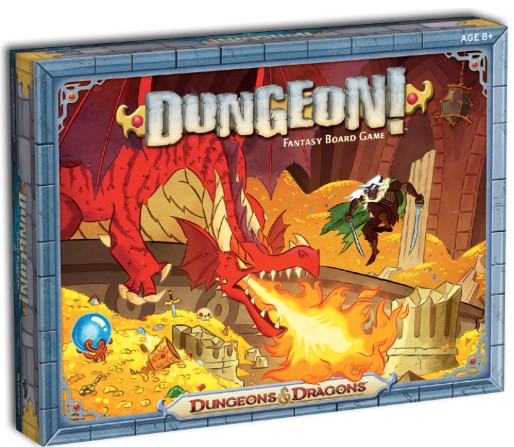
Dungeon!
is an excellent introductory game for families interested in exploring the fantastical world of Dungeons & Dragons (D&D). Designed by Wizards of the Coast, this game is perfect for players aged 8 and up, making it an ideal starting point for younger adventurers and a fun challenge for older ones.
Getting Started with Dungeon!:
Game Components:
Board: Divided into various dungeon levels, each with increasing difficulty.
Character Cards: Choose from different adventurers, each with unique abilities.
Monster and Treasure Cards: Populate the dungeon with challenges and rewards.
Dice: Used to simulate combat and other actions.
Objective:
The goal is to collect a certain amount of treasure and successfully exit the dungeon. Your character's abilities and chosen path will guide your strategy.
Setup:
Board Setup: Lay out the game board and place monster and treasure cards in their respective locations.
Character Selection: Each player chooses a character card. Characters range from rogues and clerics to fighters and wizards, each suited for different dungeon levels.
Starting Position: Place your character at the dungeon entrance.
Gameplay Overview:
Turn Structure:
Move: Roll the dice to determine how many spaces you can move.
Explore: Enter rooms and encounter monsters by drawing monster cards.
Combat: Roll dice to battle monsters. Successful battles yield treasure cards.
Collect Treasure: Gather enough treasure to meet your character's goal and then make your way back to the entrance.
Combat Mechanics:
Roll dice to attack monsters. If you defeat the monster, you gain treasure; if not, you might have to retreat or face consequences.
Each monster has a different difficulty level, so strategize when to take risks.
Difficulty Levels:
The board is divided into sections with increasing difficulty. Younger players can start with easier sections, while more experienced players can tackle harder levels.
Your character choice will guide which levels you should aim to explore.
Advancing in Your D&D Journey:
After Dungeon!: Once players are comfortable with Dungeon!, they can progress to "Adventures Begin," another introductory game that further immerses them into the D&D universe.
Building Skills: These games teach fundamental D&D mechanics such as strategic movement, combat, and treasure collection, preparing players for more complex adventures.
Dungeon! is a fantastic way to introduce the exciting world of Dungeons & Dragons to your family. Its blend of strategy, combat, and treasure hunting provides an engaging experience that grows with your skills, making it a staple for family game nights. Ready to embark on your adventure? Grab your character card, roll the dice, and dive into the dungeon!
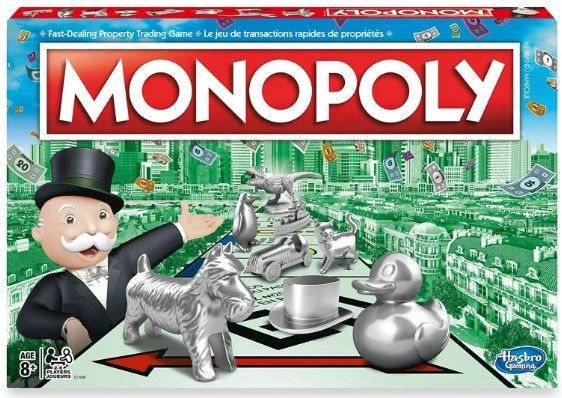
Monopoly
A classic board game where players buy, develop, and manage properties to accumulate wealth and bankrupt their opponents. It's more than just rolling dice and moving tokens; it's a lesson in financial strategy and negotiation.
How to Play Monopoly:
Game Setup:
Each player selects a token and receives a starting amount of money.
Properties are shuffled and placed on the board, ready for purchase.
Taking Turns:
Roll the dice to move your token around the board.
Depending on where you land, you can:
Buy properties to build houses and hotels.
Pay rent when landing on another player's property.
Draw Chance or Community Chest cards for surprises.
Financial Management:
Manage your money carefully to avoid bankruptcy. If you can't pay rent or fines, mortgage your properties or sell them to raise funds.
Strategic planning is crucial; invest in properties with high rent potential and develop them wisely.
Objective:
The game continues until all players but one go bankrupt.
The last player with money and assets remaining wins the game.
Why is Monopoly Educational?
Financial Skills: Teaches money management, budgeting, and handling unexpected expenses.
Investment Strategies: Introduces concepts of property investment and maximizing returns.
Negotiation and Strategy: Encourages negotiation skills and strategic decision-making.
Family Fun and Learning:
Monopoly is more than a board game; it's an opportunity to bond with family and friends while learning valuable life skills. Whether you're a seasoned player or introducing Monopoly to your children for the first time, it's a game that promises hours of entertainment and valuable lessons in financial literacy.
Ready to roll the dice and make your fortune? Gather around the board, strategize your moves, and see who emerges as the property tycoon in your family game night!
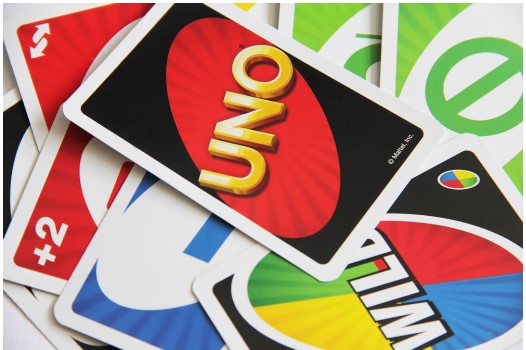
UNO
UNO is a timeless card game that’s easy to learn and perfect for large groups. It offers simple rules and fast-paced action, making it a favorite for family game nights. Here’s how to play:
Setup:
Shuffle the deck of UNO cards.
Each player draws a card. The player with the highest number deals.
The dealer shuffles and deals 7 cards to each player.
Place the rest of the deck face down to form the draw pile. Turn the top card over to start the discard pile.
Gameplay:
The player to the dealer’s left goes first.
On your turn, match a card from your hand to the top card on the discard pile by number, color, or symbol. For example, if the top card is a red 7, you can play any red card or any 7.
If you don’t have a matching card, draw one from the draw pile. If the drawn card can be played, do so immediately; otherwise, your turn ends.
Special cards like “Skip,” “Reverse,” “Draw Two,” “Wild,” and “Wild Draw Four” add exciting twists to the game.
Skip: The next player is skipped.
Reverse: Reverses the direction of play.
Draw Two: The next player draws two cards and misses their turn.
Wild: Can be played on any card, allowing you to choose a new color.
Wild Draw Four: Same as Wild but the next player also draws four cards and skips their turn.
Shouting "UNO!":
When you have one card left, shout "UNO!" If another player catches you not saying "UNO!" Before your next turn begins, you must draw two cards.
Winning the Game:
The first player to get rid of all their cards wins the round.
Points are scored based on the cards remaining in the other players’ hands. Number cards are worth their face value, and special cards have specific point values:
Skip, Reverse, Draw Two: 20 points each
Wild, Wild Draw Four: 50 points each
The game continues until a player reaches 500 points, or you can play a set number of rounds and the player with the highest score wins.
Why UNO is Great for Family Fun:
Easy to Learn: Even young children can quickly grasp the rules.
Fast-Paced: Keeps everyone engaged and entertained.
Inclusive: Perfect for large groups, accommodating 2-10 players.
Strategic: Encourages players to think ahead and plan their moves.
Portable: The compact deck is easy to take on the go for fun anywhere.
Whether you're at home or on vacation, UNO is the perfect game to bring your family together for some competitive fun.
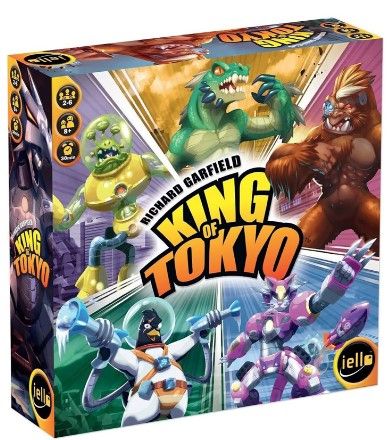
King of Tokyo: Epic Kaiju Battle
King of Tokyo is the ultimate family board game that brings kaiju battles to life with a blend of strategy and luck. Choose your favorite monster—whether it’s Godzilla, King Kong, or a unique creature—and vie for dominance over Tokyo on the game board.
This game is perfect for all ages due to its simple rules and quick gameplay, making it accessible even for younger players. Each turn involves rolling custom dice adorned with claws, energy bolts, and victory points, reminiscent of the excitement of Yahtzee.
Setup:
Place the game board in the center of the playing area.
Each player selects a monster token and places it on the "Tokyo City" space on the board. If more than one player chooses the same monster, players can agree or roll a die to determine who gets to play that monster.
Place the energy cubes and victory point tokens within reach of all players.
Shuffle the deck of Power cards and place it face-down near the board.
Gameplay:
The game is played in turns, starting with the youngest player or determined randomly.
On your turn, roll the six custom dice up to three times. Set aside any dice you want to keep after each roll.
The dice have six faces: numbers (1, 2, or 3), hearts (heal), energy (collect energy cubes), claws (attack), and lightning bolts (gain energy).
After rolling, resolve the dice results:
Numbers (1, 2, 3): Each number rolled represents victory points. Three of a kind scores bonus points (e.g., rolling three 1s gives you 1 extra point).
Hearts: Each heart rolled allows you to heal one damage point. If you're in Tokyo, you cannot heal.
Claws: Each claw rolled lets you attack other monsters. If you're outside Tokyo, you deal damage to the monster in Tokyo. If you're in Tokyo, you deal damage to all monsters outside.
Energy: Each lightning bolt rolled gives you one energy cube. Energy cubes can be spent to purchase Power cards during your turn.
Tokyo City and Tokyo Bay:
The game board has two spaces: Tokyo City (for one monster) and Tokyo Bay (for multiple monsters).
If no one is in Tokyo, you must enter Tokyo City and gain 1 victory point.
While in Tokyo, you gain 2 victory points at the start of your turn but cannot heal. Monsters outside Tokyo can attack you.
You can leave Tokyo at the end of your turn if you choose, allowing the monster who attacked you to take your place.
Winning the Game:
The game ends when a monster reaches 20 victory points or is the last monster standing.
If a monster starts their turn with 0 health points, they are out of the game.
The player with the most victory points or the last monster standing wins!
King of Tokyo combines luck with strategic decision-making in a fun-filled, kaiju-themed battle royale that's perfect for family game nights and gatherings.
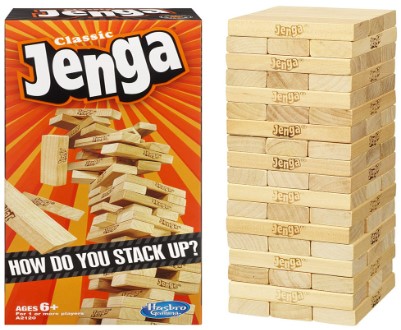
Jenga
A thrilling and suspenseful game that tests players' balance, strategy, and nerves. Using 54 wooden blocks, players take turns carefully removing blocks from a tower and placing them on top. The goal is to keep the tower standing tall while causing it to topple on your opponent's turn.
How to Play Jenga:
Setting Up:
Arrange the blocks in layers of three, alternating the direction with each level (like a grid).
Once the tower is constructed, it should form a sturdy, freestanding structure.
Gameplay:
Decide who goes first (often determined by the youngest player or by drawing lots).
On your turn, carefully choose one block from any complete layer below the highest completed layer.
Use only one hand to remove the block, without disturbing the stability of the tower.
Place the block on top of the tower, forming a new complete layer.
The game continues with each player taking turns until the tower collapses.
Winning and Losing:
The player who causes the tower to collapse loses the game.
Alternatively, if playing for points, players can count the number of successful moves before the tower falls, with the player achieving the highest score declared the winner.
Why Jenga is Fun:
Skill and Strategy: Requires steady hands and strategic thinking to carefully remove blocks without causing the tower to collapse.
Tension and Excitement: Builds suspense as the tower becomes increasingly unstable with each move.
Quick Setup and Play: Simple rules make it easy for players of all ages to jump in and start playing immediately.
Versatility: Can be played almost anywhere, from family game nights to parties, and even in classrooms as a team-building exercise.
Tips for a Thrilling Jenga Game:
Gentle Touch: Encourage players to handle blocks delicately to maintain tower stability.
Challenge Yourself: Experiment with different strategies, such as removing middle blocks or focusing on stabilizing the tower.
Variations: Try Jenga with added rules or special blocks (like colored blocks with specific tasks or penalties).
Jenga is not just a game of physical skill but also of mental fortitude and strategy. Whether you're playing with friends, family, or colleagues, Jenga promises hours of suspenseful fun and friendly competition. So, stack up the blocks, take a deep breath, and see who can keep their nerve the longest in this classic tower-building showdown!
Categories
Recent Posts










